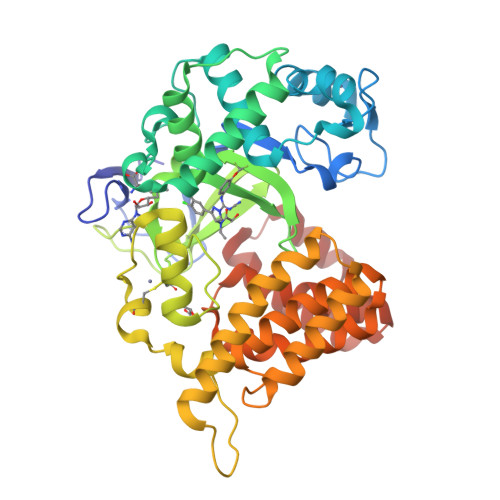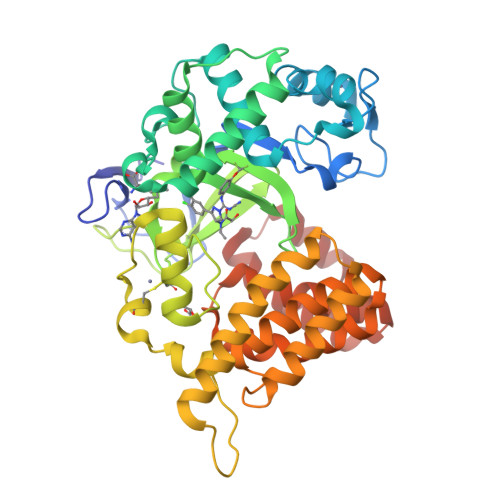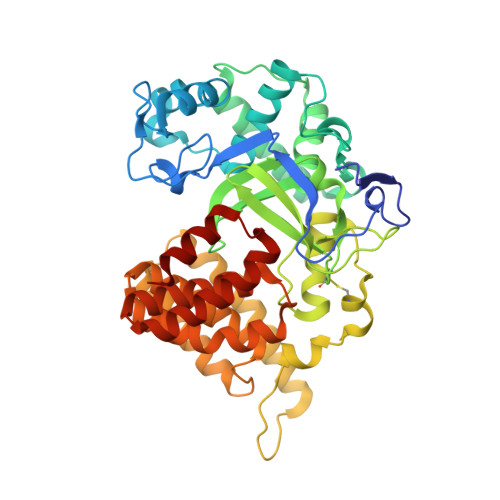Discovery and Characterization of a Highly Potent and Selective Aminopyrazoline-Based in Vivo Probe (Bay-598) for the Protein Lysine Methyltransferase Smyd2.
Eggert, E., Hillig, R.C., Kohr, S., Stockigt, D., Weiske, J., Barak, N., Mowat, J., Brumby, T., Christ, C.D., Ter Laak, A., Lang, T., Fernandez-Montalvan, A.E., Badock, V., Weinmann, H., Hartung, I.V., Barsyte-Lovejoy, D., Szewczyk, M., Kennedy, S., Li, F., Vedadi, M., Brown, P.J., Santhakumar, V., Arrowsmith, C.H., Stellfeld, T., Stresemann, C.(2016) J Med Chem 59: 4578
- PubMed: 27075367
- DOI: https://doi.org/10.1021/acs.jmedchem.5b01890
- Primary Citation of Related Structures:
5ARF, 5ARG - PubMed Abstract:
Protein lysine methyltransferases have recently emerged as a new target class for the development of inhibitors that modulate gene transcription or signaling pathways. SET and MYND domain containing protein 2 (SMYD2) is a catalytic SET domain containing methyltransferase reported to monomethylate lysine residues on histone and nonhistone proteins. Although several studies have uncovered an important role of SMYD2 in promoting cancer by protein methylation, the biology of SMYD2 is far from being fully understood. Utilization of highly potent and selective chemical probes for target validation has emerged as a concept which circumvents possible limitations of knockdown experiments and, in particular, could result in an improved exploration of drug targets with a complex underlying biology. Here, we report the development of a potent, selective, and cell-active, substrate-competitive inhibitor of SMYD2, which is the first reported inhibitor suitable for in vivo target validation studies in rodents.
Organizational Affiliation:
Drug Discovery, BAYER Pharma AG , Muellerstrasse 178, 13353 Berlin, Germany.






















